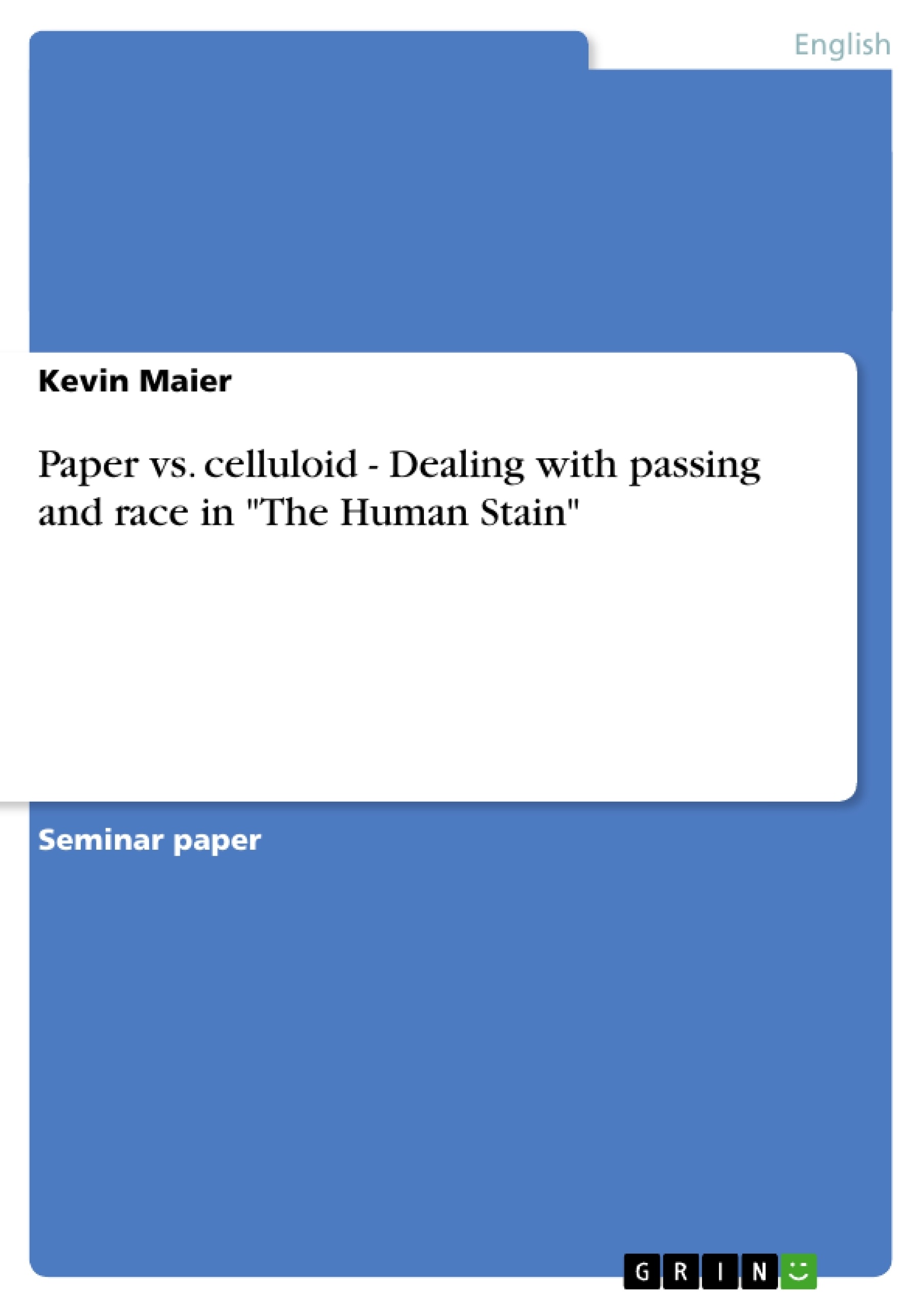This term paper will deal with one of these novels that fit both of the aforementioned criteria – it is hard to translate into a screen play and the filmic version did not receive much attention at the box-office with a tanking of only 5,000,000 US$ in the United States (The Human Stain [Box Office]). The subject under discussion is the contemporary novel THE HUMAN STAIN written by Philip Roth and first published in 2000. The novel tells the story of a former college professor, Coleman Silk, who resigns from his position after being misleadingly accused of racism. After the death of his wife he is willed to write a book about his life. At this point, the reader does not know that Coleman Silk is black himself but has been passing for white for over four decades, which tragically turns the whole situation of racial harassment into irony.
In the year 2003, thus only three years after the novel had been published, the filmic version was released - an incredibly short period of time for the development, shooting and postproduction of a movie. Was it maybe too short?
This term paper primarily focusses upon the passing strand of THE HUMAN STAIN, and, therefore, its adaptation to the big screen. Is it even possible to deliver an appropriate intermedia translation of such a highly complex plot as it is to be found in Philip Roth's novel from 2000? How did the author use race to express the actions and especially the misery of the main character Coleman Silk? In what way did Robert Benton depict Anthony Hopkin's character of the passing figure in the cinematic version? And most importantly, does the translation from book to script, and then finally, to film succeed in the end?
Inhaltsverzeichnis (Table of Contents)
- Introduction
- Story Tellers: General Issues with Book to Screen Adaptations
- Structure & Length
- Narration & Focalization
- Plausibility & Creditability
- Coleman Silk does not Like the Movies: Dealing with Passing, Race, and the Roots of Coleman Silk in THE HUMAN STAIN
- Conclusion
Zielsetzung und Themenschwerpunkte (Objectives and Key Themes)
This term paper examines the adaptation of Philip Roth's novel The Human Stain to the big screen. It investigates whether a complex narrative like Roth's can be effectively translated to film, focusing particularly on the theme of passing and its impact on the protagonist, Coleman Silk.
- The challenges of adapting literary works to film, especially those with a strong focus on internal thoughts and feelings.
- The portrayal of passing and race in Philip Roth's The Human Stain.
- The effectiveness of Robert Benton's adaptation of the novel in capturing the essence of Coleman Silk's story.
- The impact of the filmic adaptation on the audience's understanding of the novel's themes.
Zusammenfassung der Kapitel (Chapter Summaries)
The paper begins by discussing the general challenges of adapting literary works to film, highlighting the differences between written and cinematic storytelling. It then delves into the specific case of The Human Stain, exploring the novel's themes of passing, race, and identity.
The paper focuses on the challenges posed by the novel's narrative structure, particularly its reliance on internal focalization and the intricate portrayal of Coleman Silk's complex motivations and past.
The paper aims to provide a comprehensive analysis of the film adaptation, examining its strengths and weaknesses in translating the novel's themes and characters to the big screen. It will explore how the director, Robert Benton, chose to depict Coleman Silk's passing and the consequences of his decision.
Schlüsselwörter (Keywords)
The paper focuses on key concepts such as passing, race, identity, adaptation, film, literature, The Human Stain, Philip Roth, Robert Benton, and the challenges of translating complex narratives between media.
- Quote paper
- Kevin Maier (Author), 2008, Paper vs. celluloid - Dealing with passing and race in "The Human Stain", Munich, GRIN Verlag, https://www.grin.com/document/92332




